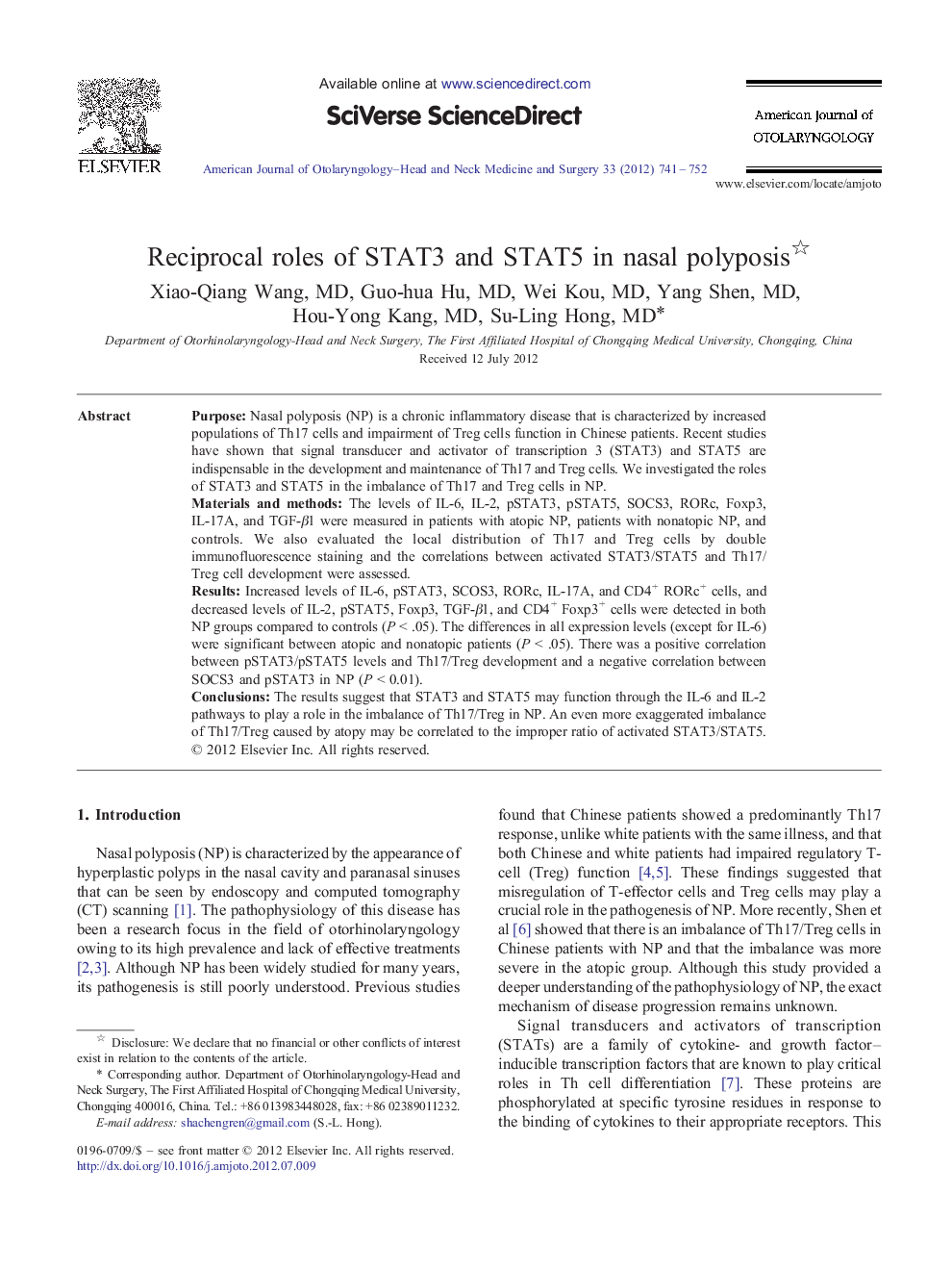| Article ID | Journal | Published Year | Pages | File Type |
|---|---|---|---|---|
| 4103324 | American Journal of Otolaryngology | 2012 | 12 Pages |
PurposeNasal polyposis (NP) is a chronic inflammatory disease that is characterized by increased populations of Th17 cells and impairment of Treg cells function in Chinese patients. Recent studies have shown that signal transducer and activator of transcription 3 (STAT3) and STAT5 are indispensable in the development and maintenance of Th17 and Treg cells. We investigated the roles of STAT3 and STAT5 in the imbalance of Th17 and Treg cells in NP.Materials and methodsThe levels of IL-6, IL-2, pSTAT3, pSTAT5, SOCS3, RORc, Foxp3, IL-17A, and TGF-β1 were measured in patients with atopic NP, patients with nonatopic NP, and controls. We also evaluated the local distribution of Th17 and Treg cells by double immunofluorescence staining and the correlations between activated STAT3/STAT5 and Th17/Treg cell development were assessed.ResultsIncreased levels of IL-6, pSTAT3, SCOS3, RORc, IL-17A, and CD4+ RORc+ cells, and decreased levels of IL-2, pSTAT5, Foxp3, TGF-β1, and CD4+ Foxp3+ cells were detected in both NP groups compared to controls (P < .05). The differences in all expression levels (except for IL-6) were significant between atopic and nonatopic patients (P < .05). There was a positive correlation between pSTAT3/pSTAT5 levels and Th17/Treg development and a negative correlation between SOCS3 and pSTAT3 in NP (P < 0.01).ConclusionsThe results suggest that STAT3 and STAT5 may function through the IL-6 and IL-2 pathways to play a role in the imbalance of Th17/Treg in NP. An even more exaggerated imbalance of Th17/Treg caused by atopy may be correlated to the improper ratio of activated STAT3/STAT5.
